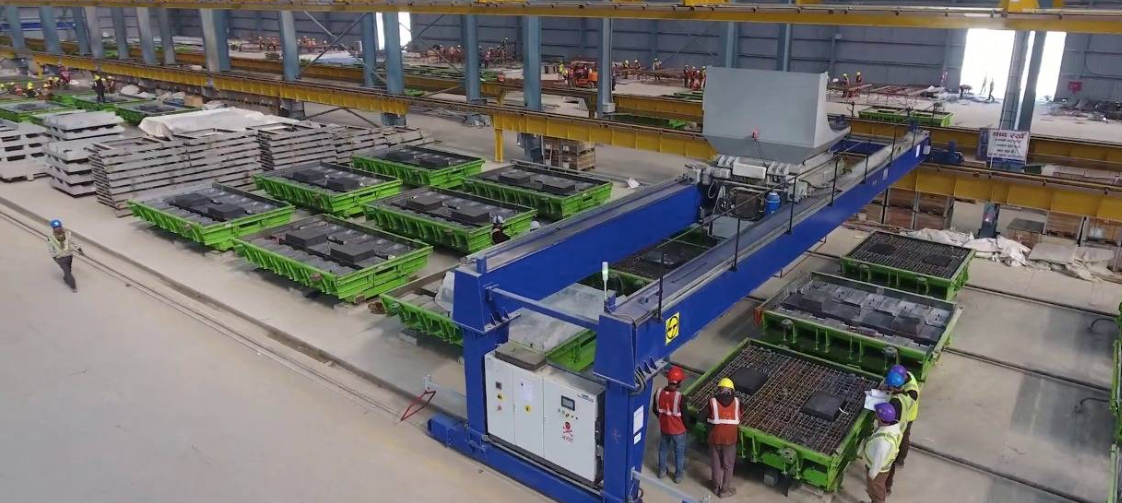A New Era in Indian Railways
Delhi-Meerut RRTS: In a monumental leap towards modernizing India’s transportation network, the Delhi-Meerut Regional Rapid Transit System (RRTS) has embarked on its journey, bringing with it a promise of speed, efficiency, and innovation. The heart of this revolutionary stride lies in the advanced track technology supporting the RRTS, propelling the Namo Bharat Trains at unparalleled speeds and setting new standards for the nation’s rail travel.
The Need for Innovation: Setting the Stage for RRTS
The inception of the Delhi-Meerut RRTS project was met with a daunting challenge – finding a track system that could support the high-speed demands of a semi-high-speed system. Traditional ballastless track systems, prevalent in metro rail projects, were limited to speeds up to 95 kmph. Enter the National Capital Region Transport Corporation (NCRTC), the driving force behind RRTS, who delved into a global quest for the perfect track technology.
Austrian Porr: Revolutionizing Indian Railways
After meticulous research and analysis, NCRTC’s endeavor led them to Austrian Porr, a pioneering name in ballastless track technology. Recognizing the potential, NCRTC acquired the Intellectual Property Rights for RRTS corridors, marking a historic moment in India’s rail engineering. This strategic move not only introduced a cutting-edge track system but also paved the way for indigenous manufacturing and innovation.
Precast Track Slab Technology: Engineering Marvel for RRTS
The cornerstone of this innovative leap is the Precast Track Slab technology. These high-capacity ballastless track slabs, sized at 4m x 2.4m, boast remarkable durability and require minimal maintenance. Utilizing elastomer as a separation layer and employing high-quality concrete, these slabs ensure both strength and finesse. This technology not only supports the design speed of 180 kmph but also significantly reduces the life-cycle cost of the tracks, making it a sustainable choice for India’s future rail projects.
Uniformity Across Corridors: Ensuring Consistency and Efficiency
NCRTC’s commitment to excellence extends to the uniformity of track structures across different corridors. The precast track slab technology, showcased in the Delhi-Meerut RRTS, is set to become the norm for all under-construction and upcoming RRTS corridors. This strategic implementation ensures consistency, efficiency, and ease of maintenance, bolstering the overall integrity of India’s regional rapid transit system.
Namo Bharat Trains: A Glimpse into the Future
The pinnacle of this technological marvel is embodied by the Namo Bharat Trains, rapidly becoming synonymous with speed and reliability. Operating at an impressive speed of 160 kmph, these trains connect Delhi and Meerut within an hour, covering distances of 100 km effortlessly. With stations strategically positioned every 5-10 km, the Namo Bharat Trains redefine the essence of swift and convenient travel, setting a benchmark for the nation.
India’s Tryst with Progress
The Delhi-Meerut RRTS, propelled by the innovative track technology and exemplified by the Namo Bharat Trains, signifies India’s tryst with progress. Prime Minister Narendra Modi’s vision, exemplified by the launch of the RapidX train ‘NaMo Bharat’, marks a historic moment in India’s transportation history. As the nation embraces this cutting-edge rail system, it ushers in an era of seamless connectivity, speed, and efficiency, redefining the future of commuting for millions. The RRTS project stands not only as a testament to engineering excellence but also as a beacon of progress lighting India’s path toward a brighter tomorrow.







